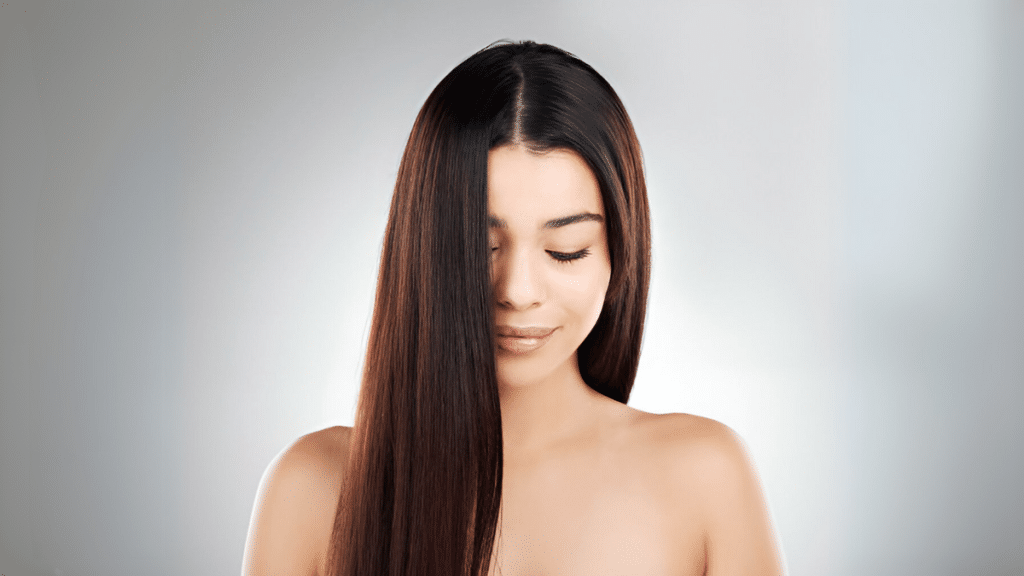When it comes to enhancing your natural beauty with extensions, understanding your unique mane type is crucial. Choosing the right extensions goes beyond selecting the prettiest style or color—it’s about matching your texture so seamlessly that no one can tell the difference. Many fashionistas have fallen into the trap of purchasing gorgeous bundles only to discover that they don’t blend naturally with their own tresses. To ensure your extensions look flawless and effortless, start by identifying your mane’s specific type and texture. Here’s what you need to know to find your perfect match and avoid the common pitfalls of incompatible extensions.
How Do I Find My Hair Type Before Buying Extensions?
Knowing your hair type is foundational when selecting extensions. If you opt for Relaxed Straight Hair Extensions, you’ll want them to blend seamlessly without extra heat or manipulation. To determine your mane’s type, closely observe your tresses after washing without any styling products. Hair types range from type 1 (straight) to type 4 (tightly coiled).
To pinpoint your exact type:
- Observe the curl pattern: If your curls are tightly coiled and springy, you likely have type 4 hair. Loose curls or defined spirals indicate type 3 hair.
- Check strand thickness and density: Fine, medium, or coarse textures significantly influence extension blending.
- Evaluate porosity: High porosity absorbs moisture quickly, affecting extension compatibility and care methods.
Understanding these elements ensures that your extensions match your natural tresses flawlessly and comfortably.
What Extensions Work Best for 4a, 4b, 4c, 3c Hair Types?
When it comes to enhancing your natural curls, choosing extensions that align with your texture is key to achieving a flawless, low-maintenance look. Different Hair Types require specific extension textures to maintain a natural appearance and reduce styling efforts.
- 3c Hair: With its defined, corkscrew curls, 3c hair pairs best with extensions that mirror its shape—opt for deep curly or kinky curly textures for a seamless blend.
- 4a and 4b Hair: These textures feature tight, soft coils that are densely packed. Kinky curly or Afro-textured extensions are ideal for maintaining volume and definition without the need for constant manipulation.
- 4c Hair: Characterized by very tight coils and little visible definition, 4c hair matches exceptionally well with kinky curly or kinky coily extensions. A close texture match makes styling easier and keeps your natural strands protected.
Ultimately, selecting extensions that reflect the unique curl pattern of different hair types helps preserve your natural hair, reduces the need for heat tools, and supports healthy hair maintenance.
Why Do My Extensions Not Blend with My Natural Hair?
If your extensions refuse to blend seamlessly, your hair type and extension selection likely don’t align. Texture mismatches occur because of differences in curl pattern, porosity, density, or thickness between your natural tresses and extensions.
Common blending issues include:
- Texture Incompatibility: Straight extensions paired with tightly coiled or curly mane often fail to blend naturally, leading to obvious texture differences.
- Incorrect Density Match: Thin extensions in thick hair or vice versa can cause unnatural gaps or noticeable differences.
- Styling Method: Inappropriate installation techniques or inadequate blending methods often lead to visible separations between your natural hair and extensions.
Addressing these issues begins with correctly identifying your mane type and ensuring your extensions share similar characteristics in texture, density, and thickness.
How Does Hair Type Affect Extension Choice?
Your hair type significantly influences which extensions will blend seamlessly, how they’ll need to be installed, and how much daily maintenance is required. For instance, straighter tresses typically match effortlessly with sleek extensions requiring minimal blending effort. In contrast, curlier mane textures, such as 4a-4c, demand extensions that mimic natural patterns closely to reduce the necessity for frequent styling.
Matching extensions to your hair type ensures:
- Reduced Styling Effort: Naturally matching extensions lower the need for heat and frequent manipulation.
- Longevity of Extensions: Extensions matching your natural texture maintain their appearance longer because of fewer adjustments and styling.
- Protection of Your Natural Mane: Correct texture matching prevents damage from excessive styling or manipulation aimed at blending.
Therefore, accurately identifying your mane’s characteristics ensures ease of care, comfort, and enhanced style longevity.
Can I Wear Straight Bundles if I Have 4c Hair?
Technically, you can wear straight bundles if you have 4c hair, but this choice comes with challenges. Achieving a natural look requires constant heat styling, which can cause significant damage to your delicate coils over time. To minimize this risk, opt for textures that naturally blend or consider protective styles.
If you’re set on a sleek look, consider using relaxed straight hair extensions, which have textures that mimic chemically relaxed hair. These extensions provide a smoother transition from your natural coils and significantly reduce the amount of heat needed to blend your hair effectively. Pairing this choice with methods like closure or frontal installations can further help reduce stress on your mane.
Quick Answers to Common Questions
What happens if I buy extensions that don’t match my hair type?
You’ll face challenges blending your extensions, requiring more maintenance and possibly damaging styling practices.
Are clip-ins suitable for type 4 hair?
Yes, provided you choose extensions specifically designed to match kinky or curly textures.
Can I alter my extension texture if it doesn’t match perfectly?
Extensions can sometimes be altered through heat styling or manipulation, but consistent texture-matching initially is ideal to prevent unnecessary wear or damage.

